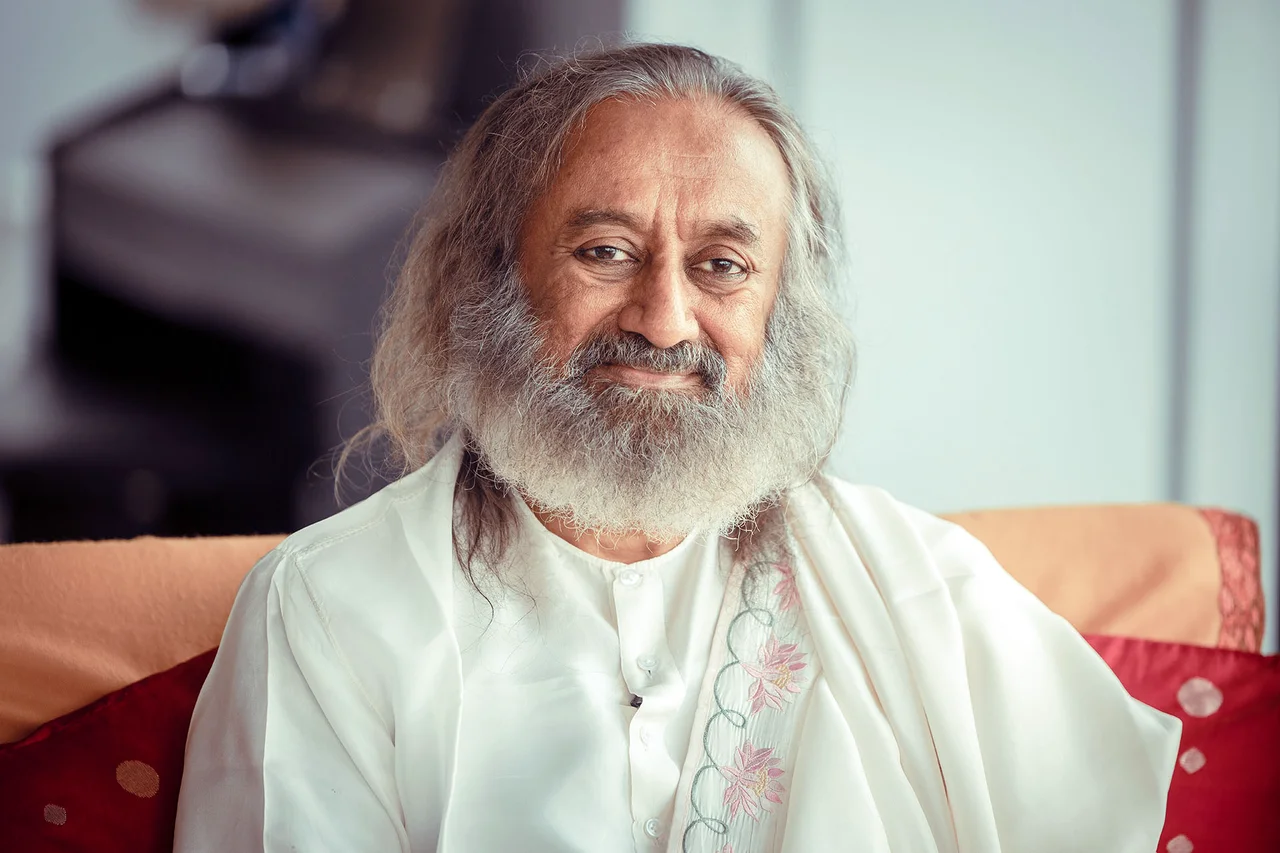

Bhagavad Gita
An ancient tale of wisdom in the midst of chaos.
What is Bhagavad Gita?
The Bhagavad Gita is an ancient tale of wisdom in the midst of chaos. It presents applied knowledge to contribute to our practice in the day to day world of work, home and family. It is a series that inspires reason and discernment to help one transcend both concepts and limitations. As Arjuna walks the path towards liberation we find ourselves right.
Insights from Sri Sri Ravi Shankar ji

The fire of love or fire of knowledge creates unpleasantness or a sense of longing in the beginning, but it moves on to the blossoming of bliss, the blossoming of fullness.

The secret to health and happiness lies deep within every human. Yoga is the science of discovering one's own self - the very source of pure consciousness, peace and bliss.
Your desire for pleasure or happiness makes you unhappy.
See, we don’t desire for the Highest in our life. What we really desire is – make a phone call to somebody or correcting some misunderstanding. This is all that we are engaged in. All that our thoughts hover around are really unimportant, insignificant things but they appear very big. This is what is called Maya – illusion.
~ Gurudev Sri Sri Ravi Shankar
Commentary by
Gurudev Sri Sri Ravi Shankar
Such beautiful, profound insights on love in all its forms. Gurudev’s style is very casual, with practical examples and stories. His writing is and easy to understand, while the message…
Daniel
It’s a beautiful book. Narada Bhakti Sutra explains us what True Love is all about. And Gurudev’s commentary even simplifies the knowledge. A must buy!!
Ajay
Narada Bhakti Sutra is the simplest and easiest way to understand what bhakti is… and Gurudev Sri Sri Ravishankar has elaborated on each sutras very clearly which has helped my…
Neha
Every chapter signifies a different stage in our life
“Don’t think The Bhagavad Gita got over long time ago. It’s still going on every day in each and every person’s life. Our life is all these 18 chapters of the Gita. In your life, you can see which chapter you are in now. Where are you stuck? 1st Chapter? 2nd? 3rd? … You can gauge for yourself where your life is.”
“The Bhagavad Gita has a depth of ocean and vastness of the sky.”
Gurudev Sri Sri Ravi Shankar
Chapter |
Descriptions |
|
Chapter 1 Vishada Yoga |
The distress of Arjuna. Arjuna has requested Krishna to move his chariot between the two armies as he fears losing friends and relatives as a consequence of war. |
|
Chapter 2 Sankhya Yoga |
After asking Krishna for help, Arjuna is instructed into various subjects such as, Karma yoga, Gyaana yoga, Sankhya yoga, Buddhi yoga and the immortal nature of the soul. |
|
Chapter 3 Karma Yoga |
Virtue of actions. Krishna explains how Karma yoga, i.e. performance of prescribed duties, but without attachment to results, is the appropriate course of action. |
|
Chapter 4 Jnana Yoga |
The path of knowledge. Krishna reveals that he has lived through many births, always teaching yoga for the protection of the pious and the destruction of the impious and stresses the importance of accepting a guru. |
|
Chapter 5 Karma Vairagya Yoga |
Renouncing the fruits of action. Arjuna asks Krishna if it is better to forgo action or to act. |
|
Chapter 6 Abhyasa Yoga |
Krishna describes the difficulties of the mind and the techniques by which mastery of the mind might be gained. |
|
Chapter 7 Vijnana Yoga |
Discrimination. Krishna describes the absolute reality and its illusory energy Maya. |
|
Chapter 8 Aksara Brahma Yoga |
The importance of the last thought before death, differences between material and spiritual worlds, and light and dark paths that a soul takes after death are described. |
|
Chapter 9 Raja Vidya Raja–Guhya |
Krishna explains how his eternal energy pervades, creates, preserves, and destroys the entire universe. |
|
Chapter 10 Vibhuti Vistara Yoga |
Arjuna accepts Krishna as the Supreme Being, quoting great sages who have also done so. |
|
Chapter 11 Visvarupa Darsana Yoga |
On Arjuna's request, Krishna displays his "universal form" Viśvarūpa. |
|
Chapter 12 Bhakti Yoga |
Krishna explains that both paths lead to liberation, but the path of Bhakti Yoga, where one worships the personal form of God with love and surrender, is easier for most people to follow. |
|
Chapter 13 Ksetra Ksetrajna Vibhaga Yoga |
Separation of Matter and Spirit. The difference between transient perishable physical body and the immutable eternal soul is described. |
|
Chapter 14 Gunatraya-Vibhaga Yoga |
Krishna explains the three modes (gunas) of material nature pertaining to goodness, passion, and nescience. Their causes, characteristics, and influence on a living entity are also described. |
|
Chapter 15 Purusottama Yoga |
Attaining the Supreme. Krishna identifies the transcendental characteristics of God such as, omnipotence, omniscience, and omnipresence. |
|
Chapter 16 Daivasura Sampad Vibhaga Yoga |
The Separateness of the Divine and Undivine Krishna identifies the human traits of the divine and the demonic natures. |
|
Chapter 17 Sraddhatraya Vibhaga Yoga |
Attaining the Supreme. Krishna identifies the transcendental characteristics of God such as, omnipotence, omniscience, and omnipresence. |
|
Chapter 18 Moksha Sanyasa Yoga |
Deliverance and Renunciation. The conclusions of previous seventeen chapters are summed up. Krishna asks Arjuna to abandon all forms of dharma and simply surrender unto him and describes this as the ultimate perfection of life. |



